Description
Foreword
I am delighted to write this & quot; Foreword & quot; for the first edition of the "Textbook of Child Health
Nursing". The book aims to cover the necessary need of BSc Nursing students. The book content
is well laid down in an easily understandable language. In addition, nursing care boxes and MCQs are other highlighting features of this book that shall make reading an enjoyable experience for the students.
This multi-author book has been meticulously planned and crisply covers the broad spectrum of Pediatric disorders. The book has dedicated sections to cover the recent syllabus for the BSc Nursing course. I am sure that this book would serve as a ready reference for all colleagues involved in the nursing care of children. I congratulate the editors and authors of this book for putting their efforts to bring out this book with the most updated knowledge.
Best wishes.
Dr. Manju Vatsa,
Former Principal,
College of Nursing, All India Institute of Medical Sciences, New Delhi
——————————————————————————————————————————————————————————————
TEXT BOOK OF CHILD HEALTH NURSING
Thoroughly updated and NEW edition has been made with an intention to make error-free. Provides a concise overview of child health nursing of GNM, BSc students and nursing professional working for children. Written in accordance with nursing syllabus as recommended by Indian Nursing Council (INC).
It is 1st Edition of Textbook on Child Nursing by AIIMS PEDIATRICS FACULTY has been designed to provide today’s students with solid foundations of nursing principles to prepare them to meet the challenges of tomorrow. The comprehensive coverage of the book provides concepts and components of nursing skills and techniques of nursing practice and firm foundation of nursing and also, it presents the theoretical and practical information necessary to make sound judgment white emphasizing cognitive, affective and psychomotor skills needed to carry out fundamentals of nursing activity.
Key Features: –
- Organization of chapters, subject material as per latest semester-wise syllabus exactly according to syllabus which will help student to use as a textbook.
- A simple point-wise attractive presentation of contents.
- Expanded enlarged, enriched and updated edition.
- A brand-new stylish book.
- Relevant wide range of illustrations: Figures, Tables, Boxes, Flowcharts.
- This book assists the beginners in a technical or professional nursing program.
- This book has been designed to be of immense help and information to nursing students.
- This book is useful for BSc Nursing students
Special Features
- Authored & reviewed by top nursing faculties AIIMS India
- More than 50 + Contributors
- 100 + Figures, Illustrations & Tables covered
- NURSING PROCEDURES
- First ever book developed in the Indian context
- Perfect Amalgamation of Theoretical & Clinical Aspects
- Emphasis on critical thinking and clinical judgment through various case scenarios
- Updated NANDA Diagnosis
Salient Features
- Learning Objectives given in the beginning of each Unit will enable the students to know what the students will be able to learn, after reading it.
- Important facts from nursing considerations point of view have been covered under TIPS boxes.
- Text is supplemented with Nursing Intervention from clinical applied point of view.
- Management protocols have been extensively covered in Flow Chart format of easy retention.
- Must know facts are covered throughout the book from clinical practice point of view.
- Important concepts and topic have been supplemented with numerous Figures/ Illustrations/ Tables for easy understanding.
- Each and every chapter ends with summarized one-liner for quick glance of the chapter.
- Important subjective and objective questions under Assess Yourself have been added at the end of every chapter to help the students assess their learning..
Editor in chief: S K Kabra
Editors: Kana Ram Jat, Narendra Kumar Bagri, Aditya Kumar Gupta and Jagdish Prasad Meena
1. Overview of Child Health Nursing
1.1 Introduction and Scope of Child Health Nursing 1
1.2 Basic Principals of Pediatric Nursing 2
1.3 Interaction with Child and Family 4
1.4 Reactions of Children after Hospital Visit and 6
Hospitalization
1.5 Changing Trends and Modern Concept of 9
Child Health Care
1.6 Pediatric History Taking and Examination 11
1.7 Child Versus Adult 12
2. Ethics in Pediatric Nursing
2.1 Ethics in Nursing 15
2.2 Accountability and Assertiveness 18
2.3 Organization of Nursing Services in Hospital 20
2.4 Evaluation of Nursing Services and Quality 24
Assurance
3. Nutrition
3.1 Normal Nutritional Requirements 28
3.2 Normal Physical Development (Growth) 29
3.3 Anthropometry and Growth Charts 30
3.4 Protein Energy Malnutrition (PEM) and 35
Failure to Thrive
3.5 Obesity 38
3.6 Vitamins and Micro and Macro-Nutrients 39
3.7 Breast Feeding, Complementary and Supplementary 41
Feeding, Pediatric Balanced Diet
3.8 Diet in Difference Diseases 45
3.9 Parenteral Nutrition 46
4. Development and Behavioral Problems
4.1 Principles of Development 49
4.2 Developmental Milestones 51
4.3 Developmental Disorders 53
4.4 Behavioural Disorders 56
5. Immunization
4.5 Developmental and Behavioural Evaluation 61
5.1 Introduction and Principles 65
5.2 National Immunization Schedule (NIS) 70
5.3 Additional Vaccine in Private Market 73
5.4 Adverse Events Following Immunization (AEFI) 74
5.5 Vaccine Storage and Cold Chain 77
6. Principles of Drugs and Fluid Therapy in Children
6.1 Basics of Pharmacokinetics and Pharmacodynamics 82
6.2 Peculiarities of Pediatric Drug Therapy 85
6.3 Principles of Drug Administration and Prevention 87
of Drug Errors
6.4 Maintenance Fluid Therapy for Children 89
6.5 Dyselectrolytemia and Acid Base Disorders 92
7. Care of Newborn
7.1 Transition from Fetal to Neonatal Life 101
7.2 Care Before, During and After Delivery 103
7.3 Care of Normal Newborn 105
7.4 Congenital Malformations 107
7.5 Birth Asphyxia and Hypoxic Ischemic 110
Encephalopathy (HIE)
7.6 Hypothermia in Newborn 111
7.7 Sepsis in Newborn 114
7.8 Systemic Problems in Neonate 115
7.9 Kangaroo Mother Care (KMC) 119
7.10 Pre-Term and Very Preterm Neonates 120
7.11 Low Birth Weight and Intrauterine 123
Growth Retardation (IUGR)
7.12 Neonatal Jaundice 124
7.13 Feeding in Neonates 126
7.14 Organization of Neonatal Care Unit 128
8. Infections
8.1 Fever in Children 131
8.2 Malaria 132
8.3 Dengue 133
8.4 Measles 134
8.5 Diphtheria 135
8.6 Pertussis 136
8.7 HIV 136
8.8 Worm Infestations (Intestinal Parasites) 138
8.9 Enteric Fever 140
8.10 Prevention of Infection in Ward, NICU, PICU 141
8.11 Antibiotic Stewardship 141
9. Tuberculosis (TB)
9.1 Epidemiology of TB 145
9.2 Diagnosis of Childhood TB 146
9.3 Management of Childhood TB 152
9.4 Latent TB 153
10. Care of Respiratory Problems
10.1 Assessment of Child with Respiratory Problem 157
10.2 Upper Respiratory Tract Infections (URTI) 158
10.3 Lower Respiratory Tract Infections (LRTI) 160
10.4 Asthma 162
10.5 Chronic Suppurative Lung Disease 169
10.6 Pleural Effusion and Empyema 171
11. Care of Gastrointestinal Problems
11.1 Acute Diarrhea 174
11.2 Chronic Diarrhea and Malabsorption Syndromes 177
11.3 Vomiting 179
11.4 GastroEsophageal Reflux and Gastroesophageal 181
Reflux Disease
11.5 Constipation 182
11.6 Pain Abdomen 183
11.7 Jaundice 184
11.8 Acute Viral Hepatitis 187
11.9 Chronic Liver Disease 188
11.10 Upper and Lower Gastrointestinal Bleeding 188
12. Care of Neurological Problems
12.1 Seizures and Epilepsy in Children 191
12.2 Central Nervous System Infections 195
12.3 Coma 199
12.4 Cerebral Palsy 202
12.5 Neuromuscular Disorders 207
12.6 Acute Flaccid Paralysis 211
12.7 Neural Tube Defects 213
13. Care of Musculoskeletal and Rheumatic Disorders
13.1 Approach to a Child with Musculoskeletal 216
Rheumatic Disorders and Rheumatological Problems
13.2 Infections of Bone and Joints 220
13.3 Juvenile Idiopathic Arthritis 221
13.4 Systematic Lupus Erythematosus 222
13.5 Vasculitis 222
13.6 Miscellaneous Connective Tissue Disorders 223
13.7 Physiotherapy in a Child with an Underlying 224
Rheumatic Disorder
13.8 Nursing Care of a Child with Rheumatic Disorder 229
14. Care of Cardiology Problems
14.1 Assessment of a Child with Congenital 235
Heart Disease
14.2 Common Congenital Heart Diseases 235
14.3 Acute Rheumatic Fever and Rheumatic 241
Heart Disease
14.4 Heart Failure in Children 245
15. Care of Hematology Problems
15.1 Approach to a Child with Anemia 249
15.2 Iron Deficiency Anemia 250
15.3 Megaloblastic Anemia 251
15.4 Transfusion of Blood Products 252
15.5 Approach to a Child with Bleeding Disorder 254
15.6 Hemophilia 255
15.7 Thalassemia 256
15.8 Aplastic anemia 257
16. Care of Oncology Problems
16.1 Childhood Leukemias 259
16.2 Childhood Lymphomas 261
16.3 Childhood Solid Tumors 262
16.4 Nursing Care Map for a Child with Malignancy 264
17. Care of Endocrine Problems
17.1 Disorders of Pituitary Gland 274
17.2 Diabetes Insipidus 276
17.3 Disorders of Thyroid 276
17.4 Disorders of Calcium Metabolism 278
17.5 Disorders of Adrenal Glands 278
17.6 Obesity 280
17.7 Disorders of Puberty 281
17.8 Disorder of Sexual Differentiation 282
17.9 Diabetes Mellitus 282
18.Genetic Disorders-A Primer for Nurses
18.1 Genetic Disorders and Their Testing 290
18.2 Genetic Counseling 294
18.3 Prevention of Genetic Disorders 296
18.4 Treatment of Genetic Disorders 298
19. Care of Renal and Genitourinary Disorders
19.1 Genitourinary Anatomy and Congenital 301
Abnormalities
19.2 Evaluation of Kidney Function 304
19.3 Urinary Tract Infection 307
19.4 Nephrotic Syndrome 309
19.5 Glomerular Diseases 311
19.6 Tubular Diseases 312
19.7 Acute Kidney Injury 313
19.8 Chronic Kidney Disease 315
19.9 Kidney Replacement Therapy 318
19.10 Hypertension 320
20.Care of Skin Problems
20.1 Approach to a Child with Rash 324
20.2 Scabies 328
20.3 Urticaria 329
21. Care of Eye Problems
21.1 Refractive Error 332
21.2 Ocular Infections 333
21.3 Pediatric Cataract 335
21.4 Ocular Trauma and Foreign Body 337
21.5 Disorders of Anterior and Posterior Segment 338
21.6 Preventive Ophthalmology 341
22. Care of ENT Problems
22.1 Otitis Media 344
22.2 Adenoid Hypertrophy 349
22.3 Hearing Loss 351
22.4 Epistaxis 354
23. Care of Orthopedic Problems
23.1 Approach to a Child with Orthopedic Problems 357
23.2 CTEV 359
23.3 Fracture in Children 363
23.4 Prevention of Trauma 369
24. Care of Dental Problems
24.1 Examination of Oral Cavity 373
24.2 Common Diseases of Oral Cavity 373
24.3 Nursing Care of Oral Cavity 381
25. Pediatric Surgical Conditions
25.1 Thoracic Malformations: Tracheo-Esophageal 383
Fistula, Congenital Diaphragmatic Hernia
25.2 Pyloric Stenosis 386
25.3 Appendicitis 387
25.4 Malrotation of the Gut 388
25.5 Intussusception 389
25.6 Rectal Prolapse 389
25.7 Genitourinary Problems 390
25.8 Hernias 394
25.9 Cleft Lip, Cleft Palate 396
25.10 Anorectal Malformation, Abdominal Wall Defects 396
25.11 Wound Dressing and Suture Removal 400
25.12 Pre- and Post-Operative Care 402
26. Pediatric Emergencies
26.1 General Approach to Pediatric Emergencies 406
26.2 Neonatal Emergencies 410
26.3 Poisoning in Children 412
26.4 Foreign BodyAspiration and Ingestion 414
26.5 Burns 416
26.6 Drowning 418
26.7 Basics of Pediatric Resuscitation 419
26.8 Nursing Care of a Child in Emergency 421
26.9 Simulation Based Learning 422
27. Child Health Nursing in PICU
27.1 Care of a Child on Ventilator 425
27.2 Ventilator Associated Pneumonia 431
28. Nursing in Palliative Care
28.1 Principals of Palliative Care 434
28.2 Systemic Palliative Care 436
28.3 Care of Pre-Terminal Child 443
28.4 Pain and Nursing Care for Palliative Care 443
29. Handing of Death
29.1 Verification and Notification 450
29.2 Care after Death 454
29.3 Communication 456
30. Community Pediatrics and Health Programs
30.1 Pediatrics, Parenthood and Community 462
30.2 Childhood Health Programs 464
30.3 School and Adolescent Health Programs 468
30.4 Child Mortality Statistics and National Policies 470
30.5 International and National Child Agencies 473
30.6 Rights of Child 475
30.7 Child Care Centers 476
30.8 Preventive Pediatrics Including Accident 487
Prevention
33. Environmental Health Hazards
31.1 Overview of Environmental Health Hazards 481
31.2 What is an Environmental Health Hazard? 482
31.3 Categories of Environmental Health Hazards 483
31.4 Principles of Hazard Management 483
31.5 Environmental Pollution 486
31.6 Principles of Pollution Management 489
32. Nursing Procedures
32.1 Bathing an Infant 493
32.2 Weighing a Baby 495
32.3 Changing Napkin 495
32.4 Oxygen Administration 496
32.5 Gastric Lavage 497
32.6 Urinary Catheterization 498
32.7 Enema, Bowel Wash 500
32.8 Feeding via Various Devices 501
32.9 Endotracheal Suction 503
32.10 Chest Physiotherapy 504
32.11 Applying Restraints 507
32.12 IV Cannulation and Blood Withdrawal 510
32.13 Nasogastric Tube Insertion 510
32.14 Assisting Doctors in Procedures 511
32.15 Administration of Medications 513
32.16 Ostomy Care
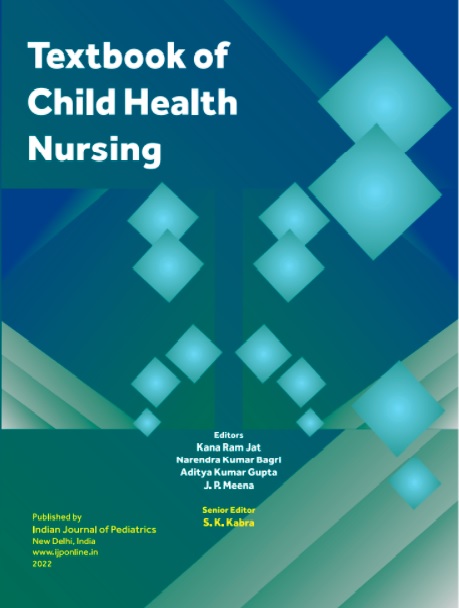
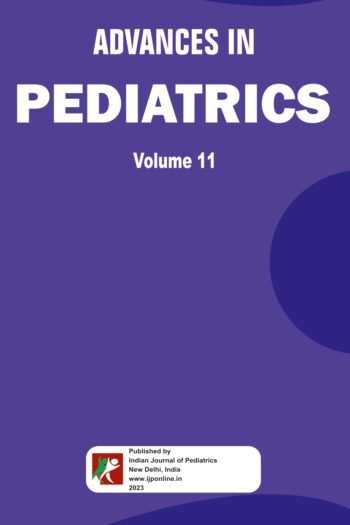
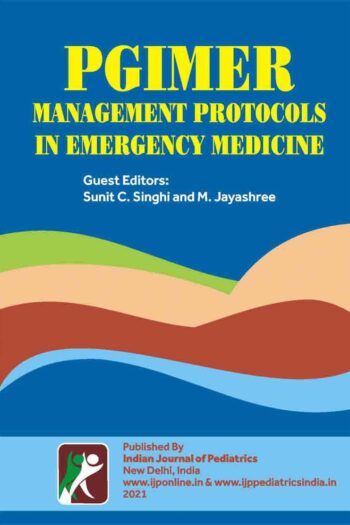
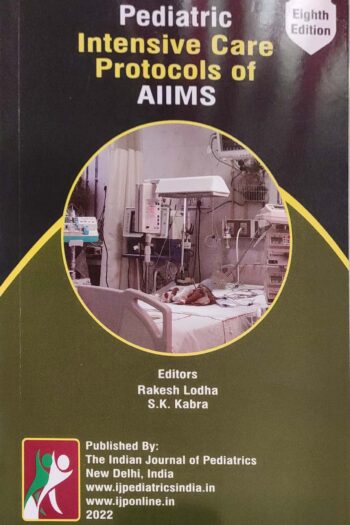
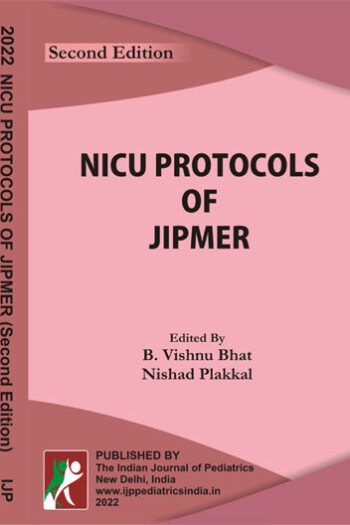
Reviews
There are no reviews yet.